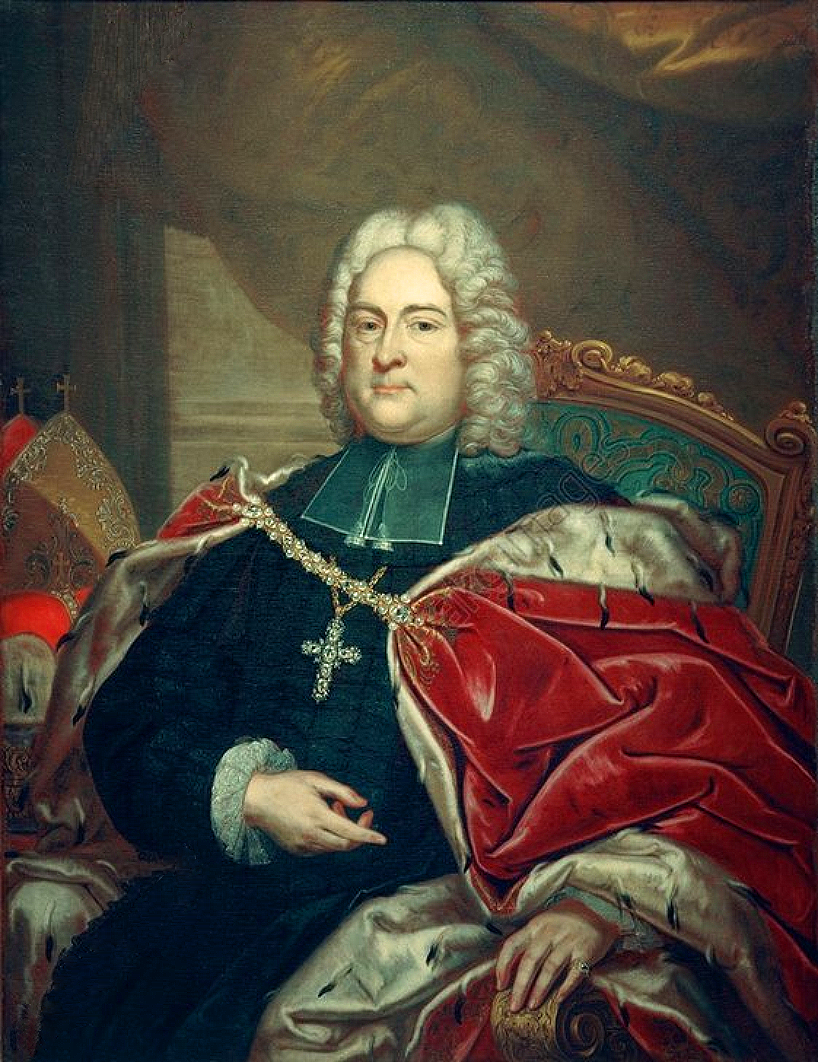Johann Philipp Franz von Schönborn on:
[Wikipedia]
[Google]
[Amazon]
Johann Philipp Franz von Schönborn (1673–1724) was the Prince-Bishop of Würzburg from 1719 to 1724. His principal claim to fame is his commissioning of the Würzburg Residence, a major work of
 As the oldest son, Johann Philipp Franz was slated for an ecclesiastical career from an early age. He was educated at the Jesuit school at
As the oldest son, Johann Philipp Franz was slated for an ecclesiastical career from an early age. He was educated at the Jesuit school at
Baroque architecture
Baroque architecture is a highly decorative and theatrical style which appeared in Italy in the early 17th century and gradually spread across Europe. It was originally introduced by the Catholic Church, particularly by the Jesuits, as a means t ...
.
Life
Johann Philipp Franz von Schönborn was born inWürzburg
Würzburg (; Main-Franconian: ) is a city in the region of Franconia in the north of the German state of Bavaria. Würzburg is the administrative seat of the '' Regierungsbezirk'' Lower Franconia. It spans the banks of the Main River.
Würzbur ...
on 15 February 1673, the oldest son of (1644-1717, see List of rulers of Schönborn) and his wife, Maria Anna Sophia (or Sophie) von Boineburg (1652–1726). His uncle was Lothar Franz von Schönborn, Archbishop-Elector of Mainz
The Elector of Mainz was one of the seven Prince-electors of the Holy Roman Empire. As both the Archbishop of Mainz and the ruling prince of the Electorate of Mainz, the Elector of Mainz held a powerful position during the Middle Ages. The A ...
from 1694 to 1729.
 As the oldest son, Johann Philipp Franz was slated for an ecclesiastical career from an early age. He was educated at the Jesuit school at
As the oldest son, Johann Philipp Franz was slated for an ecclesiastical career from an early age. He was educated at the Jesuit school at Aschaffenburg
Aschaffenburg (; South Franconian: ''Aschebersch'') is a town in northwest Bavaria, Germany. The town of Aschaffenburg is not part of the district of Aschaffenburg, but is its administrative seat.
Aschaffenburg belonged to the Archbishopric ...
, starting in 1681. He became a ''Domizellar'' canon of Würzburg Cathedral in 1682. He then studied, alongside his younger brother Friedrich Karl at the University of Würzburg
The Julius Maximilian University of Würzburg (also referred to as the University of Würzburg, in German ''Julius-Maximilians-Universität Würzburg'') is a public research university in Würzburg, Germany. The University of Würzburg is one o ...
, the University of Mainz
The Johannes Gutenberg University Mainz (german: Johannes Gutenberg-Universität Mainz) is a public research university in Mainz, Rhineland Palatinate, Germany, named after the printer Johannes Gutenberg since 1946. With approximately 32,000 stu ...
, and in Rome
, established_title = Founded
, established_date = 753 BC
, founder = King Romulus ( legendary)
, image_map = Map of comune of Rome (metropolitan city of Capital Rome, region Lazio, Italy).svg
, map_caption ...
(Collegium Germanicum), completing his studies in 1693. He was admitted to the cathedral chapter of Mainz in 1687, Bamberg in 1694 and Würzburg Cathedral in 1699. He was also named ''Probst'' of Frankfurt Cathedral in 1699. By the time he became ''Dompropst'' at Würzburg (1704) and Mainz (1714), he had already served his uncle in several diplomatic missions and had been his local representative at Erfurt
Erfurt () is the capital and largest city in the Central German state of Thuringia. It is located in the wide valley of the Gera river (progression: ), in the southern part of the Thuringian Basin, north of the Thuringian Forest. It sits ...
.
He was elected unanimously as Prince-Bishop of Würzburg on 18 September 1719. He was an active but unconventional prince. He issued a wave of decrees and left a particular imprint on the town of Würzburg. Afraid of war, he continued construction of the new town defences and of a border fortress at Königshofen irrespective of the financial resources of the local population.
Artistically gifted, he recognized the talent of Balthasar Neumann
Johann Balthasar Neumann (; 27 January 1687 (?) – 19 August 1753), usually known as Balthasar Neumann, was a German architect and military artillery engineer who developed a refined brand of Baroque architecture, fusing Austrian, Bohemian, Ita ...
whom he tasked with building a new residence in the town (1720). He also ordered construction of the ''Schönbornkapelle'' at Würzburg Cathedral. Both of these were only finished under the rule of his brother, Friedrich Karl. Johann Philipp Franz also issued a planning edict that organized construction in Würzburg (1722). He also supported the University of Würzburg
The Julius Maximilian University of Würzburg (also referred to as the University of Würzburg, in German ''Julius-Maximilians-Universität Würzburg'') is a public research university in Würzburg, Germany. The University of Würzburg is one o ...
, e.g. by endowing a chair in history (1720), and brought Johann Georg von Eckhart to Würzburg as court librarian. However, his at times erratic style of governing and his gruff personal manners antagonized some of his people, including the cathedral chapter. When he had a heart attack in 1724, dying at Löffelstelzen near Bad Mergentheim on 18 August 1724, some in his family assumed he had been poisoned. When the cathedral chapter of Würzburg elected a new bishop in 1724, they rejected Friedrich Karl, due to the unpopularity of his late brother. Christoph Franz von Hutten was elected Bishop of Würzburg instead, and only upon the latter's death in 1729, Friedrich Karl succeeded him as Prince-Bishop of Bamberg.
Johann Philipp Franz is buried in the ''Schönbornkapelle'' of Würzburg Cathedral.
References
Johann
Johann, typically a male given name, is the German form of ''Iohannes'', which is the Latin form of the Greek name ''Iōánnēs'' (), itself derived from Hebrew name '' Yochanan'' () in turn from its extended form (), meaning "Yahweh is Graciou ...